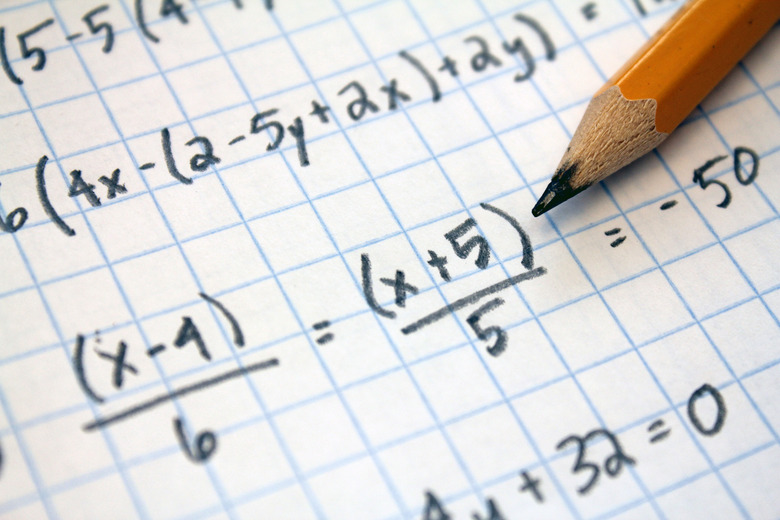What Is The Input & Output In Math?
In mathematics, input and output are terms that relate to functions. Both the input and output of a function are variables, which means that they change. You can choose the input variables yourself, but the output variables are always determined by the rule established by the function. It's common to express the input variable with the letter x and the output as f(x), which you read "f of x," but you can use any letter or symbol to denote the input variable and the function itself. You'll also see functions in the form of one variable (often y) equal to an expression involving another variable (x). A simple example is
\(y = x^2\)
which you can also write
\(f(x) = x^2\)
In such cases, x is the input and y is the output.
What Is a Function?
What Is a Function?
A function is a rule that relates each input value to one and only one output value. Mathematicians often compare the idea of a function to a coin stamping machine. The coin is your input, and when you insert it into the machine, the output is a flattened piece of metal with something stamped on it. Just as the machine can only give you only one flattened piece of metal, a function can give you only one result. You can test a mathematical relation to see if it's a function by inputting various values and making sure you get only one result for the output. If you graph a function, it may generate a straight line or a curve, and a vertical line drawn anywhere on the co-ordinate plane will intersect it at only one point.
Input Values Form the Domain of the Function
Input Values Form the Domain of the Function
Mathematicians call the set of all input values for a function its domain. The domain is an integral part of the function. In many mathematical problems, it includes all real numbers, but it doesn't have to. It does have to include all numbers for which the function works, though. To create an illustration from the non-mathematical world, suppose your function is a machine that gives all bald people a full head of hair. Its domain would include all bald people, but not all people. In the same way, the domain for a mathematical function may not include all numbers. For example, the domain for the function
\(f(x) = \frac{1}{2 – x}\)
doesn't include the number 2 because it makes the denominator of the fraction 0, which is an undefined result.
Output Values Form the Range
Output Values Form the Range
The range of a function includes all the possible output values, so it's determined by the domain as well as the function itself. For example, suppose the function is "double the input value," and the domain is all real, whole numbers. You would write the function mathematically as
\(f(x) = 2x\)
and the range would be all even numbers. If you change the domain to include fractions, the range would change to all numbers because you can get an odd number when you double a fraction.
Cite This Article
MLA
Deziel, Chris. "What Is The Input & Output In Math?" sciencing.com, https://www.sciencing.com/input-output-math-21807/. 17 November 2020.
APA
Deziel, Chris. (2020, November 17). What Is The Input & Output In Math?. sciencing.com. Retrieved from https://www.sciencing.com/input-output-math-21807/
Chicago
Deziel, Chris. What Is The Input & Output In Math? last modified March 24, 2022. https://www.sciencing.com/input-output-math-21807/
